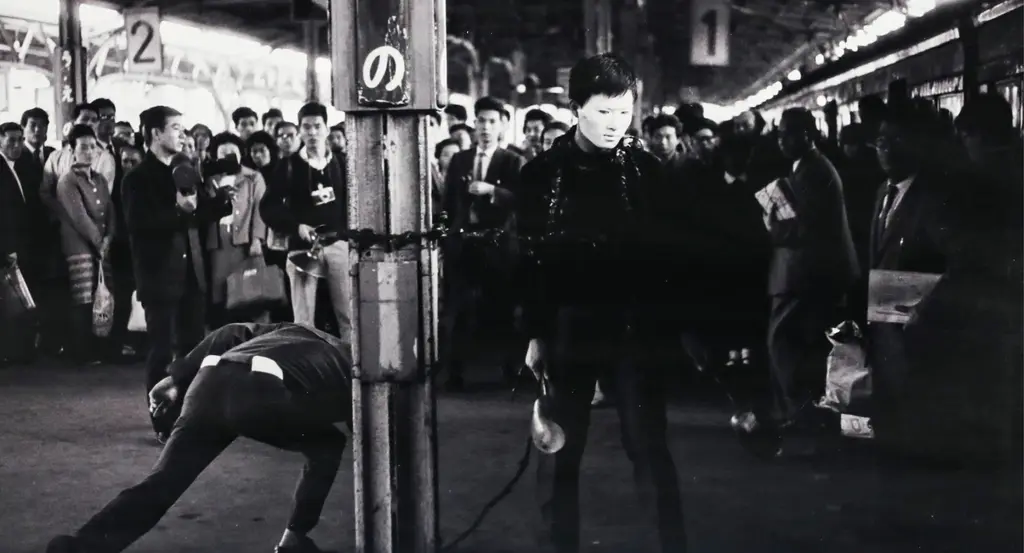James Victore
- Text by Alex King

“Never learn the taste of shit” is Brooklyn-based artist and designer James Victore’s biggest work/life tip for creative people.
After decades creating bold, ballsy and brainy designs for clients such as Yohji Yamamoto, New York’s Department of Probation and East London indie press, Do Books, James has become a voice of inspiration for artists, designers and all those who work in the creative industries.
James is a passionate advocate for the power of design to engage people, and through speaking events and his weekly Burning Questions web series, the self-taught artist challenges conventional thinking, encourages taking creativity in new directions and shares lessons learned from heading up his own highly respected design studio.
Huck caught up with James before his free talk at Rough Trade East on Wednesday September 3 at 7pm.
Why do you feel design is so important?
I don’t feel design is important. Design, at it’s base, is just the pleasant arrangement of shapes on a page. And I don’t necessarily feel communication is important, most of it is noise. But, I do believe in the magic that can happen when you put two ideas together and design, the visual arts, can be used as the teaspoon of sugar that makes these larger ideas accessible.
How do you go about creating work that is “sexy, strong and memorable”?
Great question. I think the first part of the process is to believe that one can make such work. The next part is to do what’s in your heart and stop following the rules. In my studio we work with the idea of “In the particular lies the universal” which means that if I just try to be myself, and put my thoughts and loves and fears into my work, it will resonate with a larger audience. The worst thing I can do is try to guess, “What do THEY want?”
What is it you love about Sharpies and why do you use them in so much of your work? How did they become such a big part of your style?
I think it is the simplest tool imaginable. You can’t even erase it, so it’s simpler than a pencil. For me it’s as close as I can get to being a writer, having authorship, and still be a designer.
What’s your Burning Questions series all about?
Burning Questions is about serving others. I am at a point in my carer where my work is not about me anymore. I’d like to be of service to others, to help them to not make the same mistakes as I have. I am trying to add some clarity to this life and help younger designers understand the power they possess and that they are not alone in their struggle.
How did you come up with the concept of the Do series of book covers? What inspired you?
I wanted to serve my client well and make a series of books that was big, bold and readable (for their audience I wanted to make ‘sexy, strong and memorable’). I’m always looking to add a element of surprise to my work, something illogical— so the addition of the type running straight over the artwork adds a healthy lack of disrespect for the image.
What’s your top work/life tip for creative people?
My biggest advice would be, “Never learn the taste of shit.”
That is to say, stand your ground, have an opinion and fight to make work that matters and makes you happy.
Give us a sneak peak into your talk at Rough Trade.
I suspect this will be a pleasant evening with casual conversations about love, life, poetry and maybe a little design.
Catch James Victore at Rough Trade East on Wednesday September 3 at 7pm.
James will also be hosting Take this job and love it, an event about work, life and bucking the status quo on Friday September 5.
You might like

Led By Donkeys: “It’s weird when right-wing commentators get outraged by left politics at Glastonbury – what did they expect?”
Send them to Mars — With their installation in Block9 launching the billionaire class into space, we caught up with the art and activism crew to chat about the long intersection of music and politics at the festival, how wrong the tech bros are, and more.
Written by: Isaac Muk

How pop music introduced queer culture to the mainstream
The Secret Public — Between the ’50s to the ’70s, pop music was populated with scene pushers from the margins. A new book by Jon Savage explores the powerful influence of LGBTQ+ folk.
Written by: Miss Rosen

The Getty Center’s first exclusively queer exhibition opens today
$3 Bill: Evidence of Queer Lives — Running until September, it features paintings, ephemera, video and photography to highlight LGBTQ+ histories, culture and people from 1900 to the present day.
Written by: Isaac Muk

The intricate, intimate interiors of Middle Eastern homes
Living Rooms — Drawn from photographs made over the span of three decades, Middle East Archive has compiled a photobook that explores the insides of homes across the region, spotlighting its family intimacy and hospitality.
Written by: Miss Rosen

A new documentary explores Japan’s radical post-war photography and arts scene
Avant-Garde Pioneers — Focusing on the likes of Daidō Moriyama, Nobuyoshi Araki, Eikoh Hosoe and many more, the film highlights the swell of creativity in the ’60s, at a time of huge economic change coupled with cultural tensions.
Written by: Isaac Muk

From his skating past to sculpting present, Arran Gregory revels in the organic
Sensing Earth Space — Having risen to prominence as an affiliate of Wayward Gallery and Slam City Skates, the shredder turned artist creates unique, temporal pieces out of earthly materials. Dorrell Merritt caught up with him to find out more about his creative process.
Written by: Dorrell Merritt

